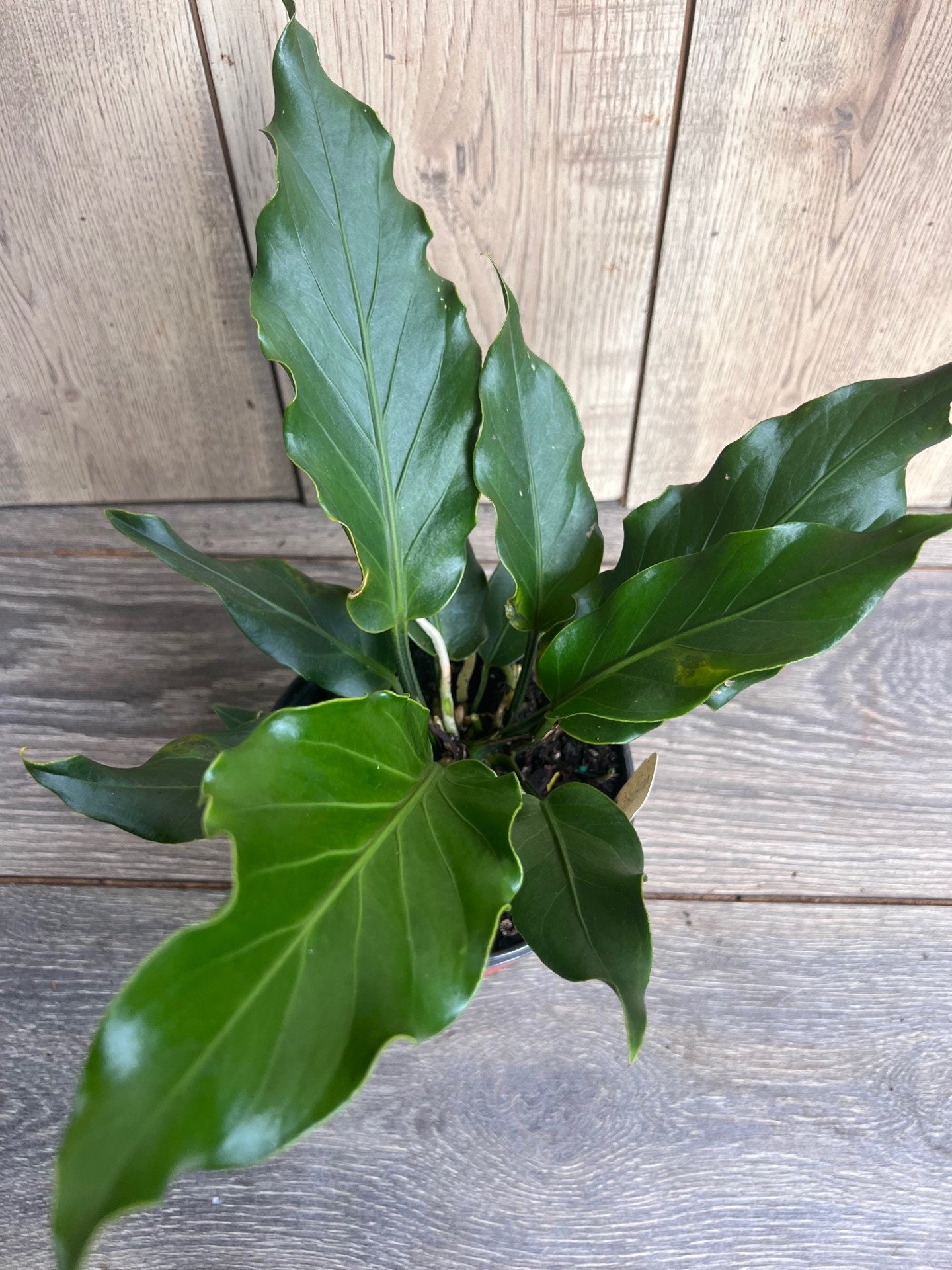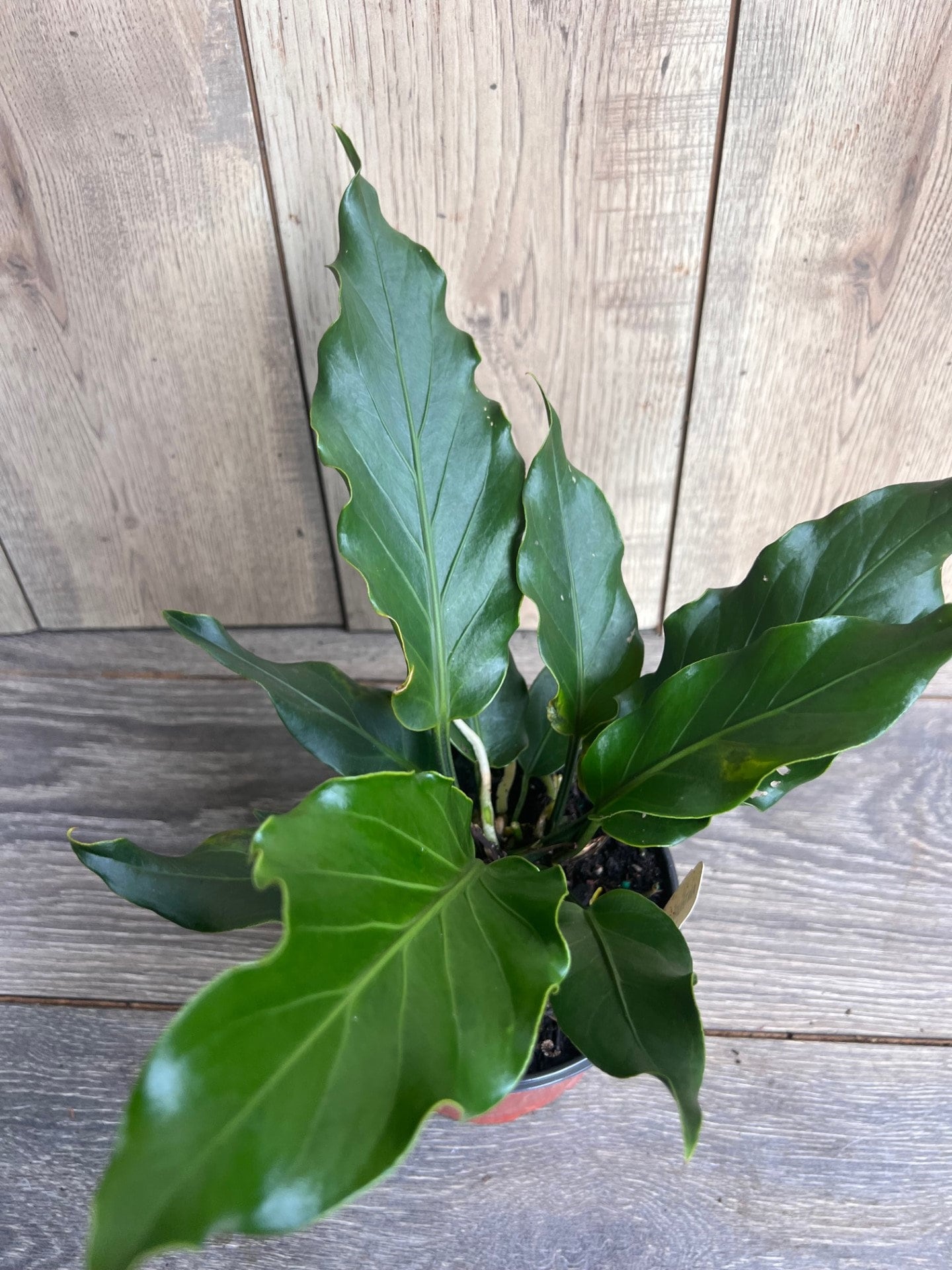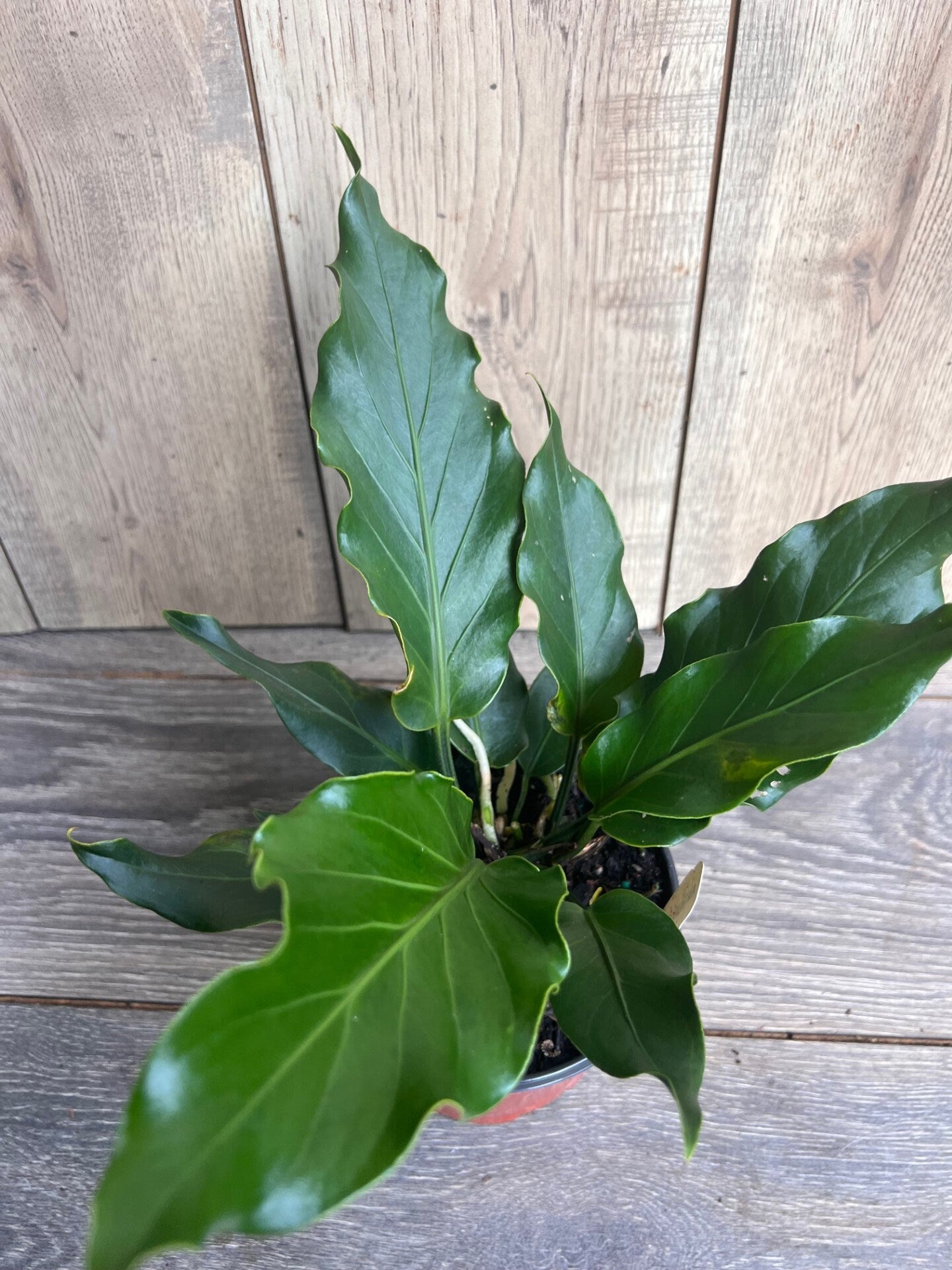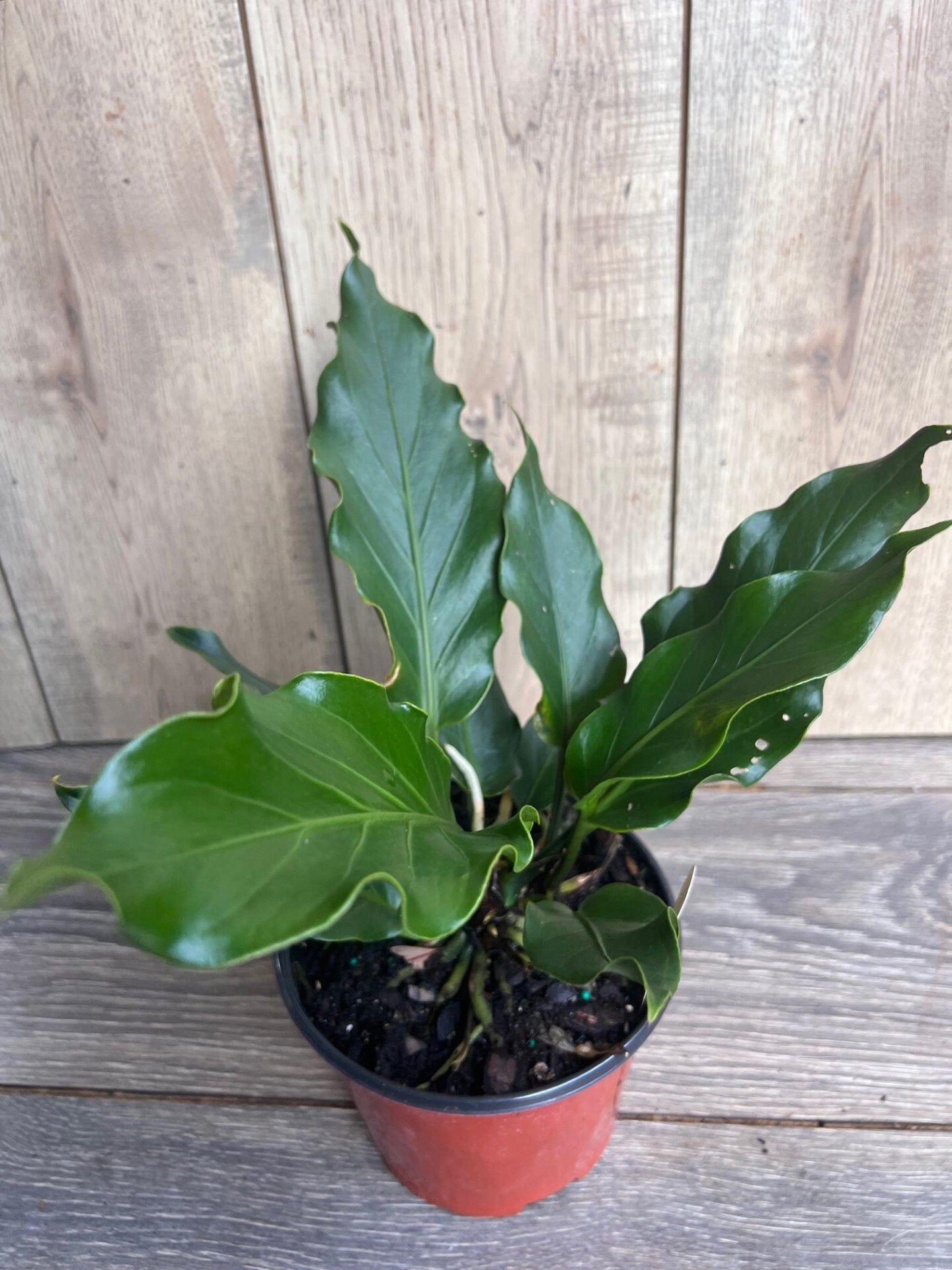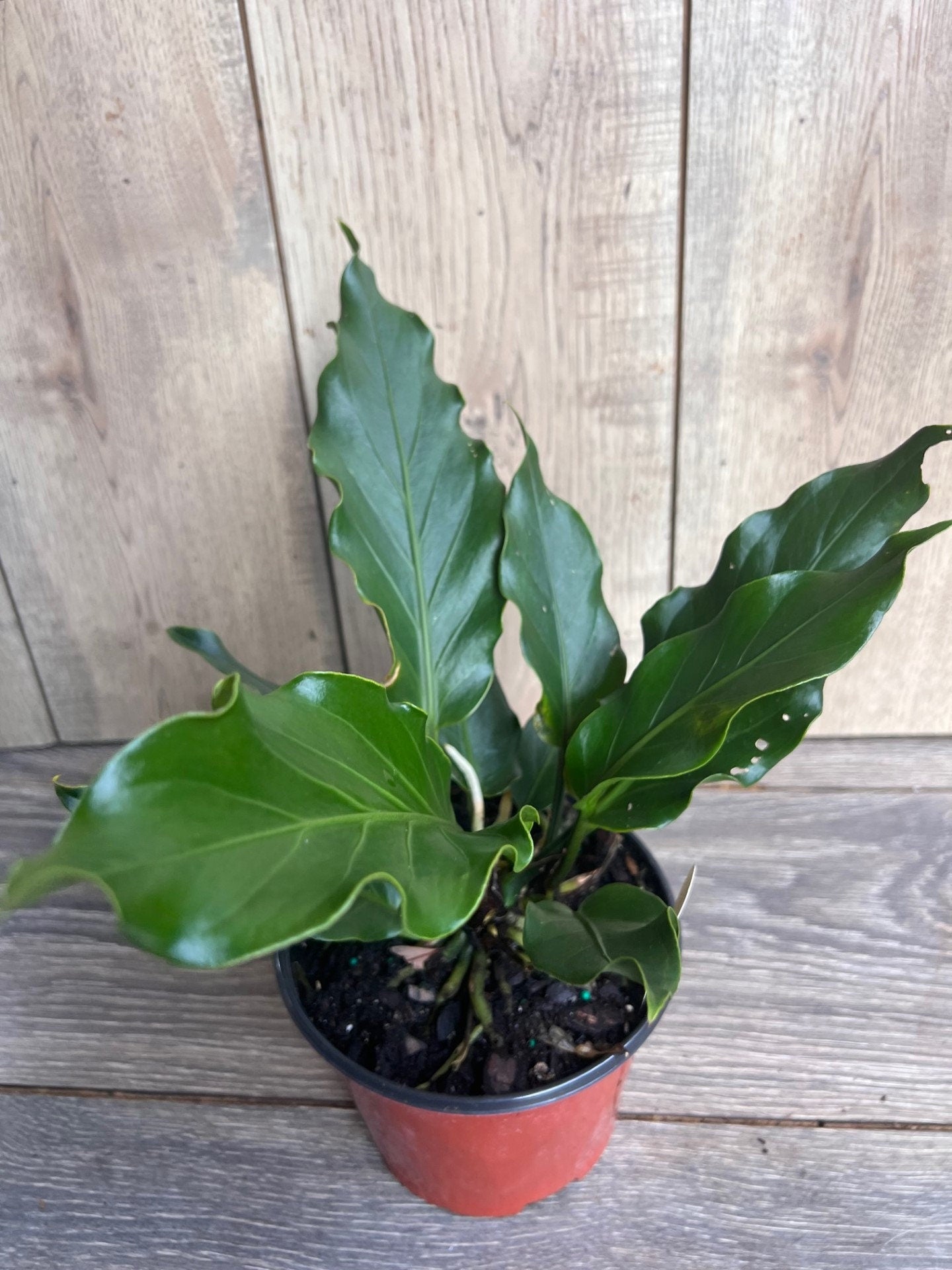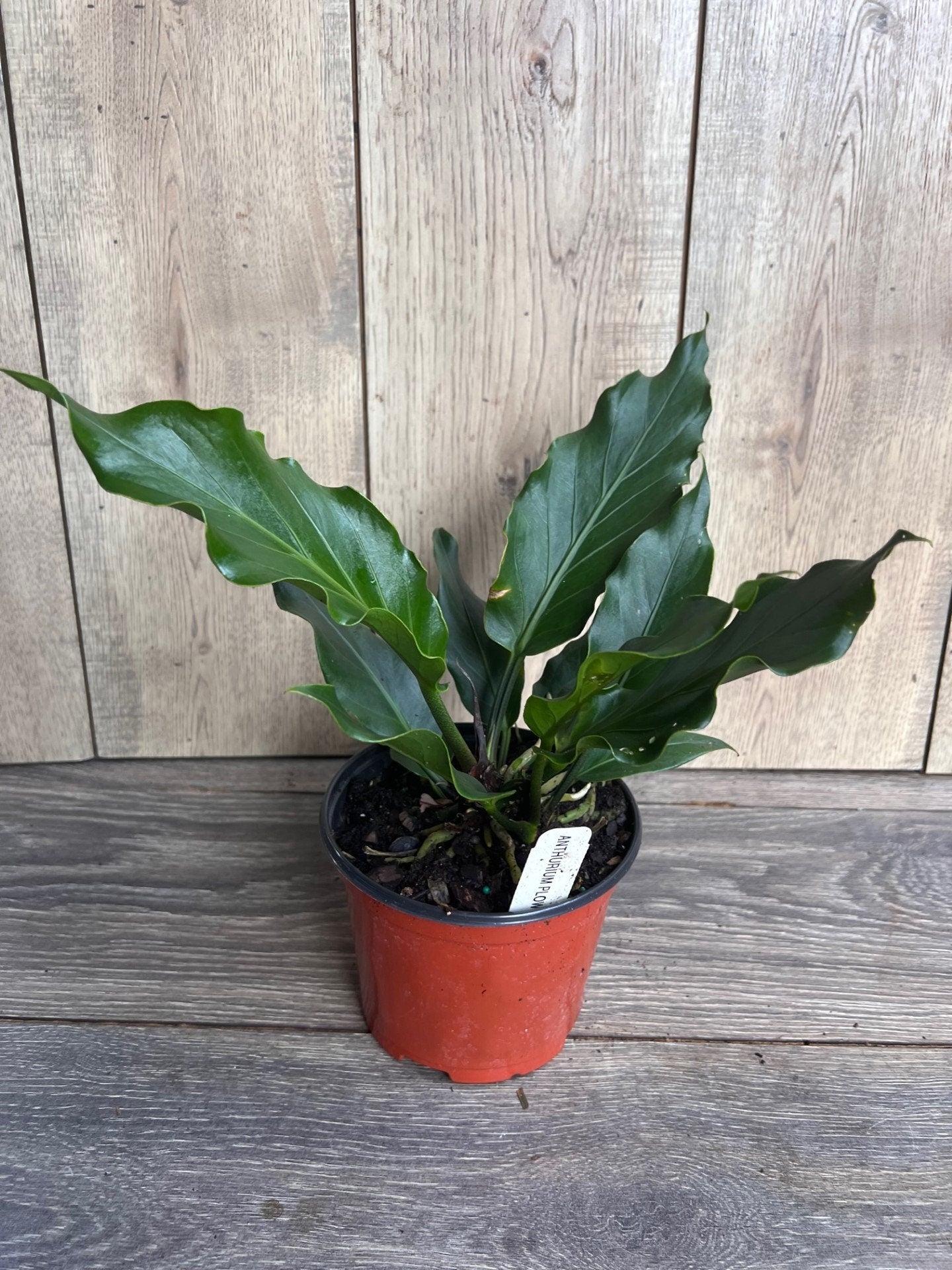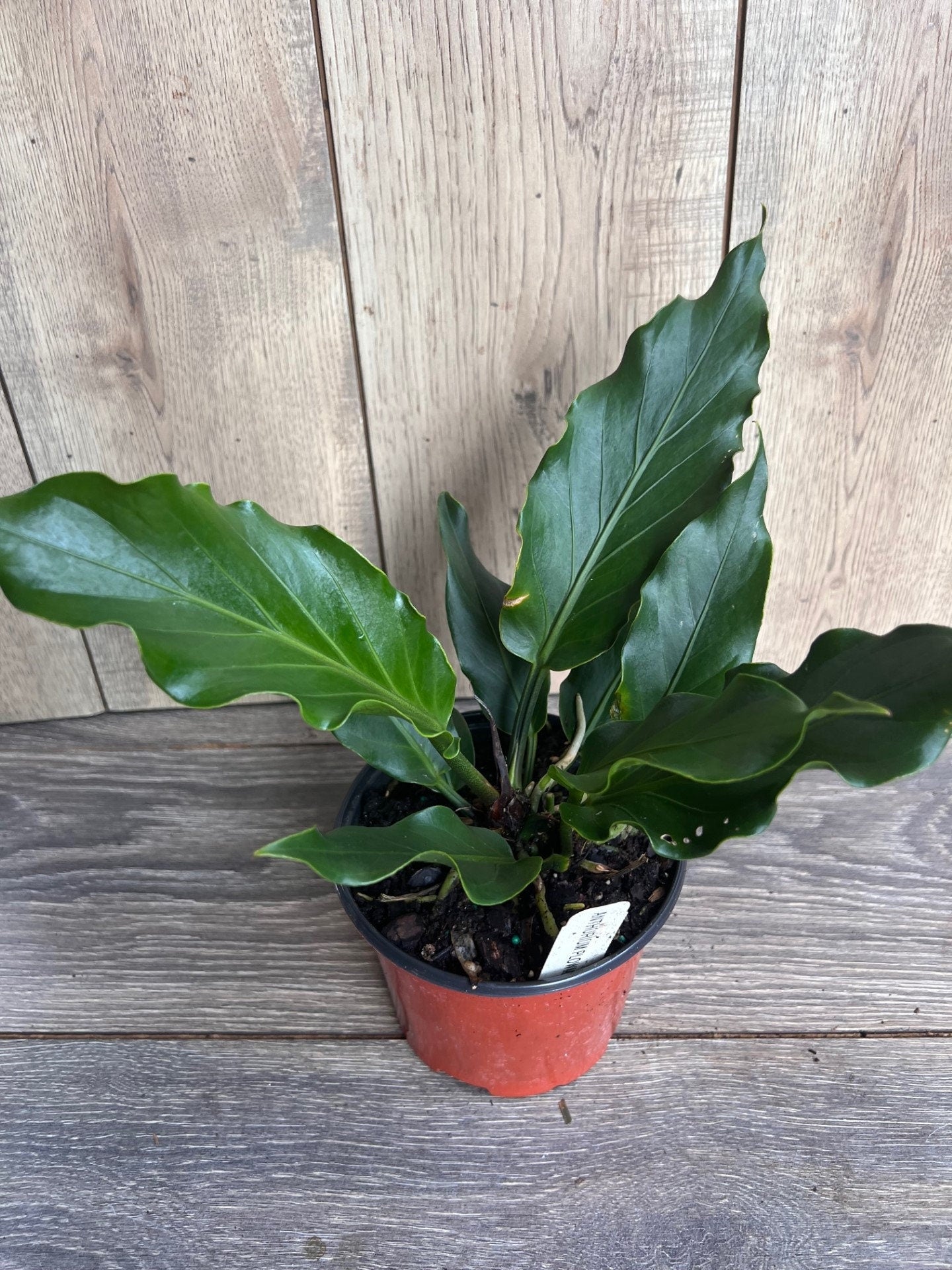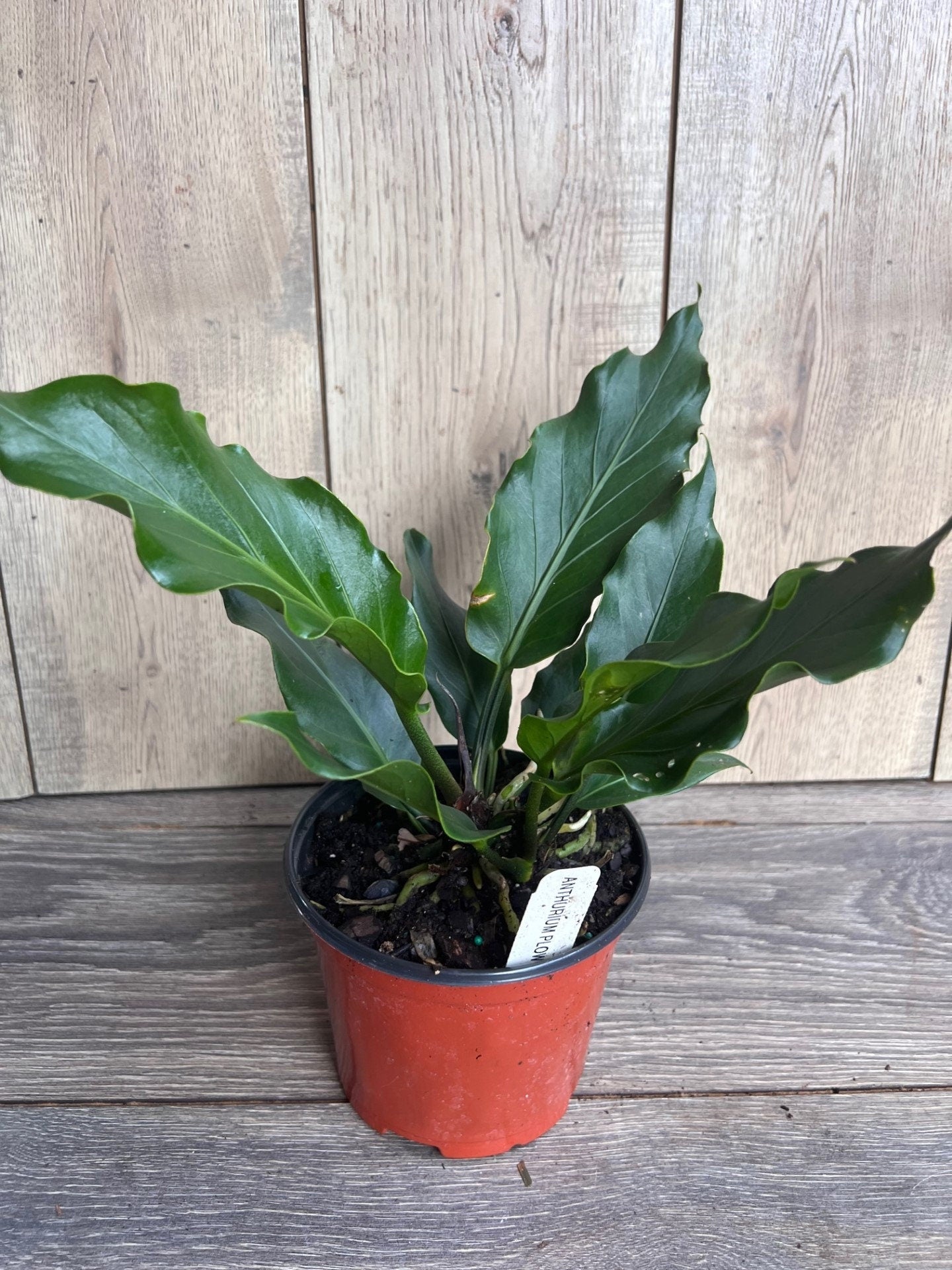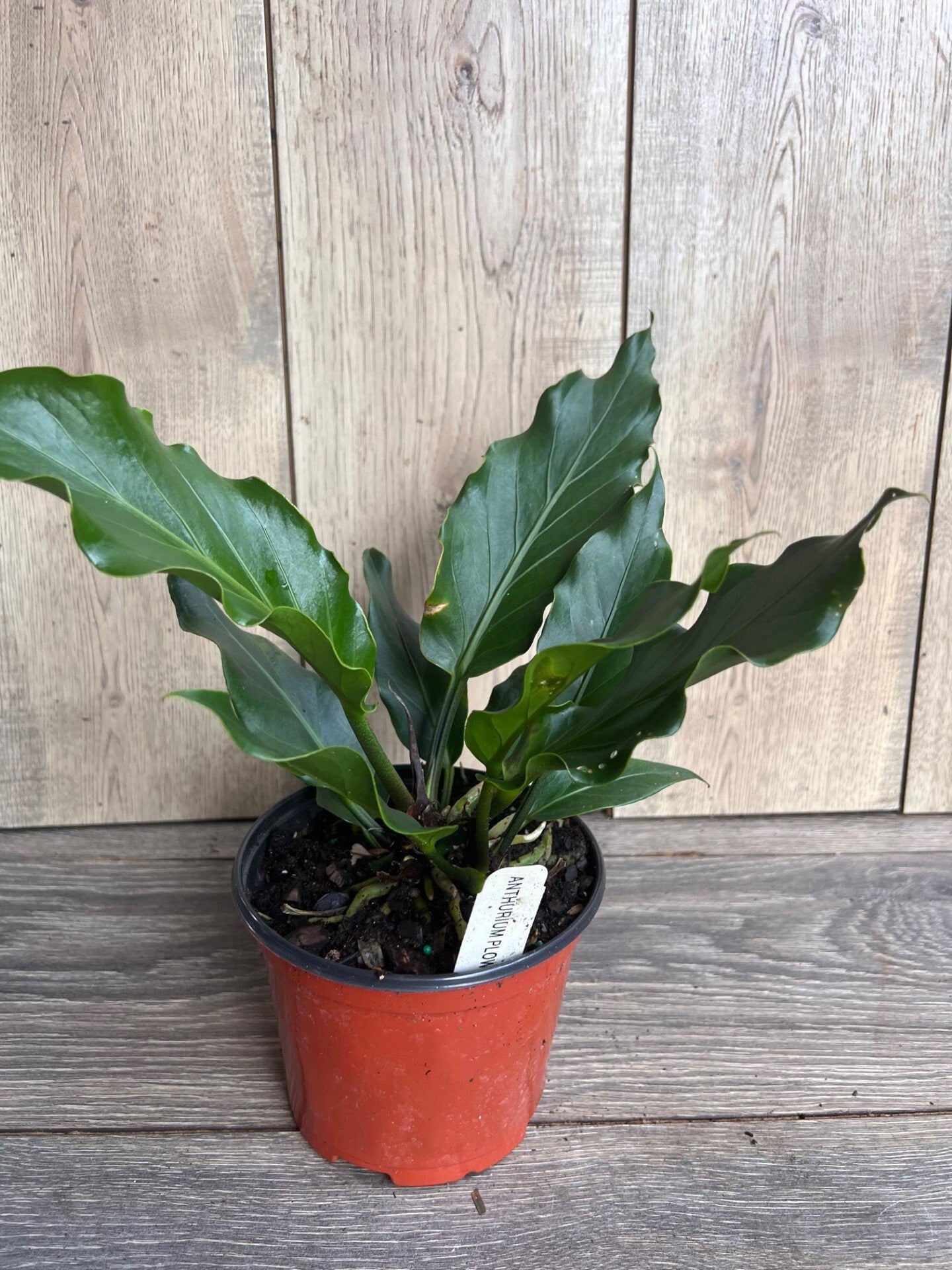1
/
of
9
Anthurium Plowmanii in 6" Pot
Anthurium Plowmanii in 6" Pot
Regular price
$30.17 USD
Regular price
$40.23 USD
Sale price
$30.17 USD
Unit price
/
per
Shipping calculated at checkout.
Couldn't load pickup availability
Anthurium plowmanii – Plowman’s Anthurium is a stunning and unique species of the Anthurium genus, native to Central and South America's tropical rainforests. Known for its large, heart-shaped leaves with deep veins and glossy texture, this plant adds a dramatic, tropical element to any indoor collection. It is relatively low-maintenance but has specific care needs to thrive.
Light Requirements
- Preferred Light: Bright, indirect light. Direct sunlight can scorch leaves and cause burn marks.
- Low Light Tolerance: Can survive in low-light conditions but will not grow or flower as vigorously.
- Best Placement: Near a south or east-facing window with filtered or diffused light.
Watering
- Watering Frequency: Keep soil consistently moist but not soggy. Water when the top 1-2 inches of soil feel dry.
- Watering Method: Water thoroughly until it drains from the bottom, but never let the plant sit in standing water.
- Signs of Overwatering: Yellow leaves, especially at the bottom, and a musty smell from the soil.
- Signs of Underwatering: Wilting leaves or crispy leaf edges.
Humidity
- Ideal Humidity: Around 60% or higher.
-
How to Increase:
- Use a humidifier.
- Place the pot on a humidity tray (shallow dish with pebbles and water).
- Mist occasionally but avoid prolonged moisture on the leaves to prevent fungal infections.
Temperature
- Ideal Range: 65°F to 80°F (18°C - 27°C).
- Cold Sensitivity: Avoid temperatures below 50°F (10°C) and cold drafts.
Soil
- Preferred Mix: Well-draining and aerated soil that retains some moisture but doesn’t become soggy. A mix of peat moss, coconut coir, perlite, and bark works well.
- Repotting: Every 1-2 years or when the plant outgrows its container. Use a pot 1-2 inches larger with drainage holes.
Fertilizing
- Growing Season (Spring & Summer): Use a balanced liquid fertilizer (10-10-10 or 20-20-20) diluted to half strength monthly.
- Winter Care: Reduce or stop fertilization during colder months as growth slows.
Pruning and Maintenance
- Pruning: Remove dead or yellowing leaves to maintain appearance. Trim leggy stems to encourage bushier growth.
- Cleaning: Wipe leaves with a damp cloth to remove dust and improve light absorption.
Flowering
- Appearance: Produces classic spathe and spadix flowers (white or pale green spathes with a narrow spadix).
- Tips for Blooming: Ensure optimal conditions with proper light, temperature, and humidity. Slightly reduce watering during cooler periods to encourage flowering.
Pests and Problems
-
Common Pests:
- Mealybugs
- Spider mites
- Aphids
- Scale insects
Regularly inspect the undersides of leaves for pests. Treat infestations with neem oil or insecticidal soap.
- Root Rot: Caused by overwatering or poor drainage. Ensure good drainage and let soil dry between waterings. If root rot occurs, trim affected roots and repot in fresh, well-draining soil.
- Leaf Yellowing/Spots: May indicate overwatering, poor drainage, or fungal infections. Avoid water on leaves when watering and ensure proper air circulation.
With proper care, Anthurium plowmanii makes an elegant addition to your plant collection. Its dramatic foliage and unique beauty can thrive with attention to light, water, humidity, and temperature.
Share
